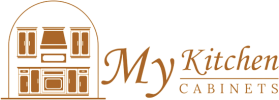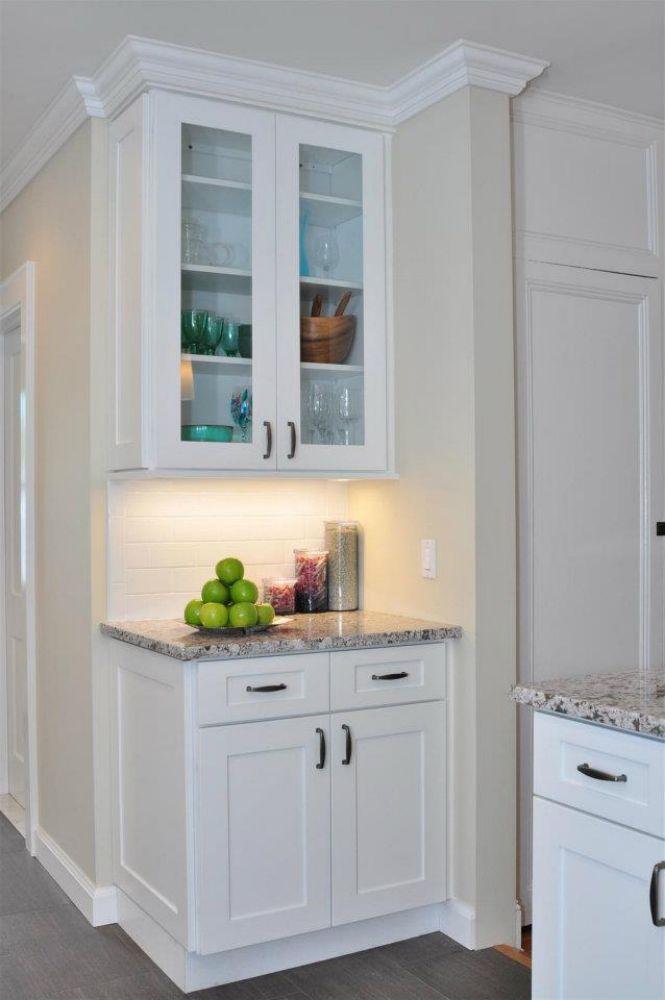Forevermark Petit Blue Cabinets are a popular choice among homeowners and designers for their sophisticated look, durability, and high-quality construction. Their deep blue hue with subtle undertones adds a touch of modern elegance to any kitchen or bathroom. While Forevermark cabinets are known for being relatively straightforward to install, achieving a professional, long-lasting result requires the right set of tools and proper preparation.
This detailed guide explores what tools are needed to install Forevermark Petit Blue Cabinets, how to use them effectively, and expert tips to ensure a smooth installation process from start to finish.
Understanding Forevermark Petit Blue Cabinets
Before diving into the tools, it’s essential to understand what makes Forevermark Petit Blue Cabinets unique. Manufactured by Forevermark Cabinetry, this collection combines elegant design with superior craftsmanship.
Key Features:
-
Solid Wood Construction: The Petit Blue series features solid wood frames and plywood box structures for enhanced durability.
-
Soft-Close Mechanisms: Drawers and doors include soft-close features to minimize noise and wear.
-
Eco-Friendly Finishes: Forevermark uses eco-conscious manufacturing processes and certified materials.
-
Stunning Blue Finish: The rich, muted blue tone complements a wide range of kitchen styles—from contemporary to farmhouse.
Because these cabinets come ready-to-assemble (RTA) or pre-assembled, your required tools may vary depending on which version you choose. Nonetheless, both installations demand precision and the right equipment to ensure stability, alignment, and aesthetics.
Preparing for Installation
Proper preparation is key before assembling or mounting Forevermark Petit Blue Cabinets. Start by organizing your tools and workspace to ensure a smooth process.
Steps Before Installation:
-
Inspect the Cabinets: Check for any damage or missing parts upon delivery.
-
Measure Your Space: Accurate measurements ensure a perfect fit and proper alignment.
-
Plan Your Layout: Use the kitchen or bathroom blueprint to mark cabinet positions on the wall.
-
Locate Wall Studs: Stud placement determines where to secure cabinets for maximum support.
-
Gather Tools and Materials: Having all tools ready minimizes delays and mistakes during installation.
Once your area is prepped, you can proceed with using the right tools for each stage of installation.
Essential Tools for Installing Forevermark Petit Blue Cabinets
Installing Forevermark Petit Blue Cabinets requires both basic hand tools and specialized equipment to ensure accuracy, stability, and a professional finish. Below are the main tools you’ll need, categorized by function.
1. Measuring and Marking Tools
Accurate measurements are the foundation of any successful cabinet installation. Misalignment can result in uneven countertops, crooked doors, or gaps between cabinets.
Recommended Tools:
-
Tape Measure: A 25-foot retractable tape is ideal for measuring walls and cabinet dimensions.
-
Level (2- or 4-foot): Ensures your cabinets are perfectly aligned horizontally and vertically.
-
Laser Level: Provides a continuous level line across long walls for upper cabinet alignment.
-
Pencil or Marking Tool: Used to mark stud locations, cabinet outlines, and mounting points.
-
Square (Combination or Carpenter’s): Keeps corners and cabinet faces at perfect right angles.
Tip:
Double-check every measurement—especially wall width, ceiling height, and appliance spacing—before securing any cabinets.
2. Fastening and Drilling Tools
Cabinet installation requires drilling holes for screws, adjusting hardware, and securely fastening units to the wall or each other.
Recommended Tools:
-
Power Drill/Driver: A cordless drill is essential for pre-drilling holes and driving screws efficiently.
-
Drill Bit Set: Includes bits for wood and masonry, depending on your wall type.
-
Screwdriver Set: For fine adjustments or when working in tight corners.
-
Impact Driver (Optional): Provides extra torque for driving screws into hardwood or dense materials.
-
Countersink Bit: Ensures screw heads sit flush with the wood surface for a clean finish.
Tip:
Use wood screws designed specifically for cabinetry. Avoid drywall screws, which can strip easily and weaken the hold.
3. Cutting and Trimming Tools
In some cases, you may need to trim filler strips, adjust toe kicks, or make minor modifications for plumbing or electrical access.
Recommended Tools:
-
Circular Saw or Table Saw: For cutting cabinet panels, fillers, and trim pieces.
-
Jigsaw: Useful for cutting irregular shapes, such as around pipes or outlets.
-
Utility Knife: Handy for scoring thin materials or trimming veneer edges.
-
Miter Saw: Provides precise angled cuts for molding or crown pieces.
-
Clamps: Hold pieces in place while cutting or gluing.
Tip:
Always wear safety glasses and hearing protection when using power saws. Precision cuts improve both fit and aesthetics.
4. Leveling and Supporting Tools
Cabinets must be level and plumb to ensure proper door alignment and even countertop installation.
Recommended Tools:
-
Shims (Wood or Plastic): Used to adjust cabinet height or fill gaps between cabinets and walls.
-
Cabinet Jack or Support Brace: Holds upper cabinets in place during installation.
-
Adjustable Workbench or Sawhorses: Provides stable support when assembling cabinet boxes.
-
Chalk Line: Helps mark a continuous level reference line across the wall for upper cabinets.
Tip:
Start installing upper cabinets first, followed by base cabinets. This approach prevents damage to lower units and makes leveling easier.
5. Fasteners and Anchoring Materials
Securing cabinets properly is vital for long-term stability, especially when handling heavy loads like countertops or dishes.
Recommended Materials:
-
Cabinet Screws: Use high-quality #10 or #12 wood screws with a length of 2.5 to 3 inches.
-
Wood Glue: For reinforcing joints and securing trim pieces.
-
Finish Nails: Ideal for attaching molding or filler strips.
-
Wall Anchors (if needed): Use heavy-duty anchors when wall studs are not conveniently located.
Tip:
When possible, always fasten into studs rather than drywall. This ensures maximum weight support.
6. Assembly Tools (for RTA Cabinets)
If you purchased ready-to-assemble (RTA) Forevermark Petit Blue Cabinets, additional tools may be required for assembly.
Recommended Tools:
-
Rubber Mallet: Helps tap pieces together without damaging the finish.
-
Allen Wrenches: Often required for connecting cam locks and bolts.
-
Clamping Squares: Keep cabinet sides perfectly aligned during assembly.
-
Wood Glue Applicator: Provides even adhesive distribution along joints.
-
Power Screwdriver: Speeds up screw installation during assembly.
Tip:
Assemble cabinets on a flat, soft surface (like a rug or cardboard sheet) to prevent scratches on the finish.
7. Finishing Tools and Accessories
Once cabinets are installed, finishing touches make all the difference. Proper caulking, sanding, and hardware installation enhance both appearance and function.
Recommended Tools:
-
Caulking Gun: Used to apply silicone sealant or adhesive where cabinets meet walls or countertops.
-
Fine-Grit Sandpaper: Smooths edges or touch-up areas before painting or sealing.
-
Touch-Up Kit: Forevermark offers color-matched touch-up pens for minor surface repairs.
-
Hardware Template: Helps align knobs and handles consistently across all doors and drawers.
-
Painter’s Tape: Protects cabinet surfaces during caulking or painting.
Tip:
Take your time during finishing—it’s the step that determines how polished your kitchen will look.
Step-by-Step Overview of the Installation Process
Now that you know which tools are required, it’s helpful to see how they fit into each stage of the cabinet installation process.
Step 1: Layout and Marking
-
Use a tape measure and level to mark cabinet locations on the wall.
-
Identify wall studs with a stud finder, marking them clearly.
-
Snap a chalk line to indicate where the top of the base cabinets and bottom of the upper cabinets will be.
Step 2: Install Upper Cabinets
-
Start with the corner cabinet, using a cabinet jack or temporary support brace.
-
Secure each cabinet with cabinet screws, ensuring they align with wall studs.
-
Check every unit with a level and use shims if adjustments are needed.
-
Clamp adjacent cabinets together and use a drill to screw through the frame edges.
Step 3: Install Base Cabinets
-
Place shims under base cabinets to level them along the floor.
-
Secure the first cabinet to the wall and check alignment with a level.
-
Continue installing adjacent cabinets, connecting them at the face frames.
-
Use a screwdriver or drill to attach them to wall studs for stability.
Step 4: Attach Fillers and Trim
-
Measure and cut filler strips using a table saw or miter saw.
-
Attach fillers using wood glue and finish nails.
-
For decorative moldings, use a miter saw to create precise corners.
Step 5: Install Countertops and Hardware
-
Once all cabinets are level and secure, install the countertop.
-
Use a caulking gun to seal edges where necessary.
-
Attach cabinet handles and knobs using a hardware template and screwdriver.
Step 6: Touch-Up and Clean
-
Fill small gaps or nail holes with matching putty.
-
Use touch-up paint for any minor scratches or blemishes.
-
Wipe surfaces clean and check for any alignment adjustments.
Safety Tips During Installation
While installing Forevermark Petit Blue Cabinets is a manageable DIY project, safety should always come first.
-
Wear protective gear—including safety glasses, gloves, and ear protection.
-
Lift properly—use your legs, not your back, when carrying heavy cabinets.
-
Disconnect power when working near outlets or light switches.
-
Secure ladders and supports before climbing or lifting overhead cabinets.
-
Work with a partner—cabinet installation often requires two people for safety and precision.
Professional vs. DIY Installation
While many homeowners choose to install Forevermark Petit Blue Cabinets themselves, professional installation is sometimes worth considering.
DIY Installation
-
Pros: Cost savings, personal satisfaction, flexible timing.
-
Cons: Requires time, precision, and physical effort.
Professional Installation
-
Pros: Guarantees expert alignment and finish, saves time, often includes warranty coverage.
-
Cons: Higher upfront cost, limited scheduling flexibility.
If you’re confident with tools and have prior experience with home improvement projects, DIY installation can yield excellent results. However, if you’re short on time or uncertain about precise measurements, professional installation ensures long-term durability and aesthetics.
Maintenance Tools for Longevity
After installation, a few maintenance tools can help keep your Forevermark Petit Blue Cabinets looking their best for years:
-
Soft Cloth or Microfiber Rag: For regular cleaning.
-
Mild Detergent Solution: Gentle enough for wood finishes.
-
Touch-Up Marker: For quick color corrections.
-
Screwdriver Set: To occasionally tighten loose hardware.
-
Silicone Lubricant: Keeps soft-close hinges working smoothly.
Conclusion
Installing Forevermark Petit Blue Cabinets can be a rewarding project when you have the right tools and preparation. From measuring and leveling to fastening and finishing, every tool plays a crucial role in ensuring precision, stability, and beauty. By using proper equipment—such as drills, levels, saws, clamps, and safety gear—you’ll achieve a professional-grade installation that enhances your home’s appeal.
Whether you choose DIY or professional installation, investing time in preparation and using the correct tools ensures your Forevermark Petit Blue Cabinets will remain elegant and durable for years to come.
Frequently Asked Questions
Q1: Can I install Forevermark Petit Blue Cabinets without power tools?
A: While it’s possible to use only hand tools, power tools like drills and saws significantly speed up the process and improve accuracy.
Q2: Do Forevermark cabinets come with installation hardware?
A: Most Forevermark cabinets include basic hardware for assembly, but you’ll need your own screws, shims, and wall anchors for installation.
Q3: How long does it take to install Forevermark Petit Blue Cabinets?
A: A typical kitchen installation can take anywhere from one to three days, depending on the layout and whether you’re assembling RTA cabinets.
Q4: What’s the most important tool for cabinet installation?
A: A level is arguably the most critical tool, as it ensures that cabinets are aligned perfectly both horizontally and vertically.
Q5: Should I hire a professional to install Forevermark cabinets?
A: If you have limited experience or a complex kitchen layout, hiring a professional installer can guarantee a flawless finish and save you time.

